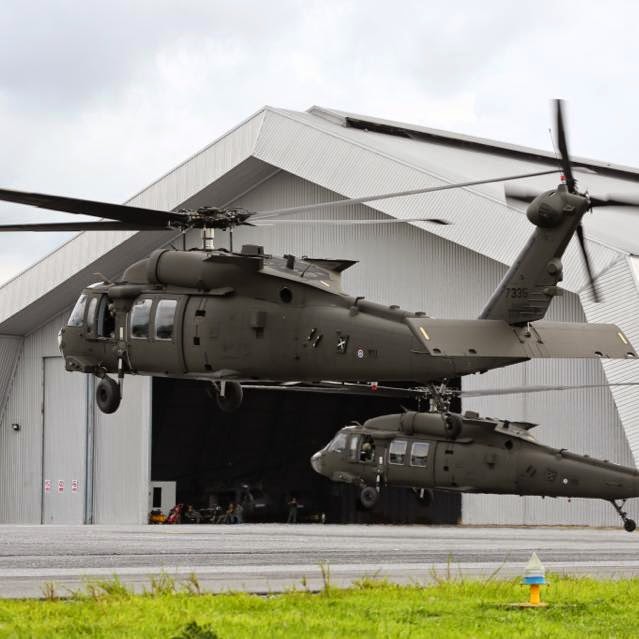Recognizing the Mechanics and Engineering Behind Uh 60 Helicopters
The UH-60 helicopter, commonly known as the Black Hawk, stands as a pinnacle of contemporary rotorcraft technology, symbolizing a mix of durable engineering and detailed technicians. As we peel back the layers of the UH-60's style, a world of intricate systems and precise design comes to light.
History of UH-60 Helicopters
The background of UH-60 helicopters traces back to the late 1970s when the United States Military looked for a innovative and flexible utility helicopter to replace its aging fleet. In feedback to this demand, the Sikorsky Airplane Corporation created the UH-60 Black Hawk helicopter. Introduced in 1979, the UH-60 swiftly ended up being a staple in military procedures as a result of its excellent capacities.
The UH-60 was created to master a variety of goals, including troop transport, medical emptying, digital war, and unique procedures. Its capability to adjust to different functions made it a useful asset to the united state Military and other military forces around the globe
Over the years, the UH-60 platform has undergone several upgrades and variants to enhance its performance and keep pace with developing objective needs. These helicopters have actually seen substantial solution in problems such as the Gulf Battle, Afghanistan, and Iraq, showcasing their dependability and flexibility in varied operational environments. The UH-60's abundant history is a testament to its enduring heritage as a top utility helicopter.

Engine and Power Systems
Using advanced propulsion technology, UH-60 helicopters are geared up with advanced engine and power systems to make certain optimum efficiency and dependability in a series of operational scenarios. The UH-60, typically called the Black Hawk, is powered by two General Electric T700-GE-701D engines, each with the ability of delivering up to 1,940 shaft horse power. These turboshaft engines provide the required drive for the helicopter to accomplish its goals efficiently, including army transport, clinical evacuation, and combat assistance.

Rotor System and The Rules Of Aerodynamics
Exactly how do the rotor system and the rules of aerodynamics of UH-60 helicopters add to their functional effectiveness and flight abilities? The blades system of the UH-60 helicopter plays a vital role in giving lift and propulsion.
The rules of aerodynamics additionally play an essential role in the performance of UH-60 helicopters. The structured body and rotor blade style decrease drag, enabling the helicopter to achieve greater rates and better gas effectiveness. The aerodynamic layout of the UH-60 also contributes to its capacity to operate in varied environmental problems, including hot temperatures and high altitudes.
Avionics and Trip Control Solution

In its elaborate coordination with the blades system and the rules of aerodynamics of UH-60 helicopters, the avionics and trip control systems form a critical network of modern technologies shaping the aircraft's functional capabilities. In the UH-60, these systems consist of digital screens, interaction radios, GPS navigation, climate radar, and auto-pilot systems.
The additional reading flight control systems of the UH-60 are responsible for equating the pilot's inputs right into the proper changes to the rotor system, guaranteeing secure trip and maneuverability. These systems are composed of hydraulic actuators, servos, and computer systems that interact to control the major and tail blades, along with other trip control surface areas. By precisely managing the helicopter's flight characteristics, these systems make it possible for pilots to execute a wide variety of goals, from transport and search-and-rescue to deal with operations, with accuracy and self-confidence.
Role and Applications in Air Travel
The duty and applications of avionics and flight control systems in aviation are indispensable to making certain the reliable and safe operation of aircraft, including UH-60 helicopters. Avionics systems in UH-60 helicopters incorporate a variety of digital systems that help in navigating, interaction, tracking, and controlling different airplane functions. These systems include electronic displays, auto-pilot systems, this link communication radios, general practitioner navigation equipment, and weather radar. Trip control systems play an important function in navigating the helicopter in the air, preserving security, and ensuring exact motions. The fly-by-wire modern technology utilized in contemporary UH-60 helicopters converts pilot inputs right into digital signals, which are after that analyzed by the flight control computer systems to readjust the airplane's control surfaces. Furthermore, these systems include safety and security attributes such as autopilot settings, terrain understanding alerting systems, and stability augmentation systems to enhance the general safety and operational abilities of the UH-60 helicopters click for more info in various missions, consisting of troop transportation, clinical evacuation, search and rescue, and airborne firefighting.
Conclusion
In conclusion, the UH-60 helicopter is a versatile airplane with a rich background and advanced design. Its engine and power systems, blades system, aerodynamics, avionics, and trip control systems all collaborate to make it a dependable and reliable device. The UH-60's role and applications in air travel are large, ranging from armed forces operations to browse and save goals. Its continued growth and use show its relevance in the area of air travel (uh 60).
In its detailed coordination with the blades system and the rules of aerodynamics of UH-60 helicopters, the avionics and trip control systems create an essential network of innovations forming the airplane's operational abilities.The trip control systems of the UH-60 are accountable for equating the pilot's inputs right into the suitable adjustments to the rotor system, making certain stable flight and maneuverability. Avionics systems in UH-60 helicopters encompass an array of electronic systems that aid in navigating, interaction, tracking, and managing numerous aircraft functions. Furthermore, these systems incorporate safety functions such as auto-pilot settings, terrain recognition advising systems, and stability enhancement systems to improve the total safety and operational abilities of the UH-60 helicopters in numerous goals, including army transport, clinical emptying, search and rescue, and aerial firefighting.
Its engine and power systems, rotor system, the rules of aerodynamics, avionics, and flight control systems all function with each other to make it a dependable and reliable maker.